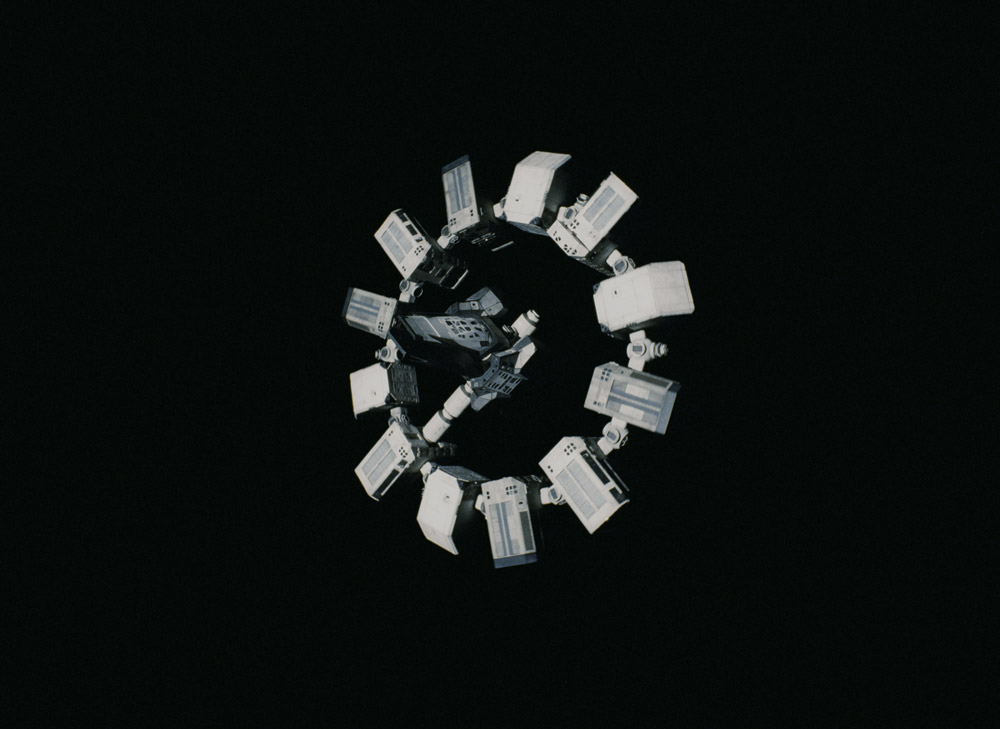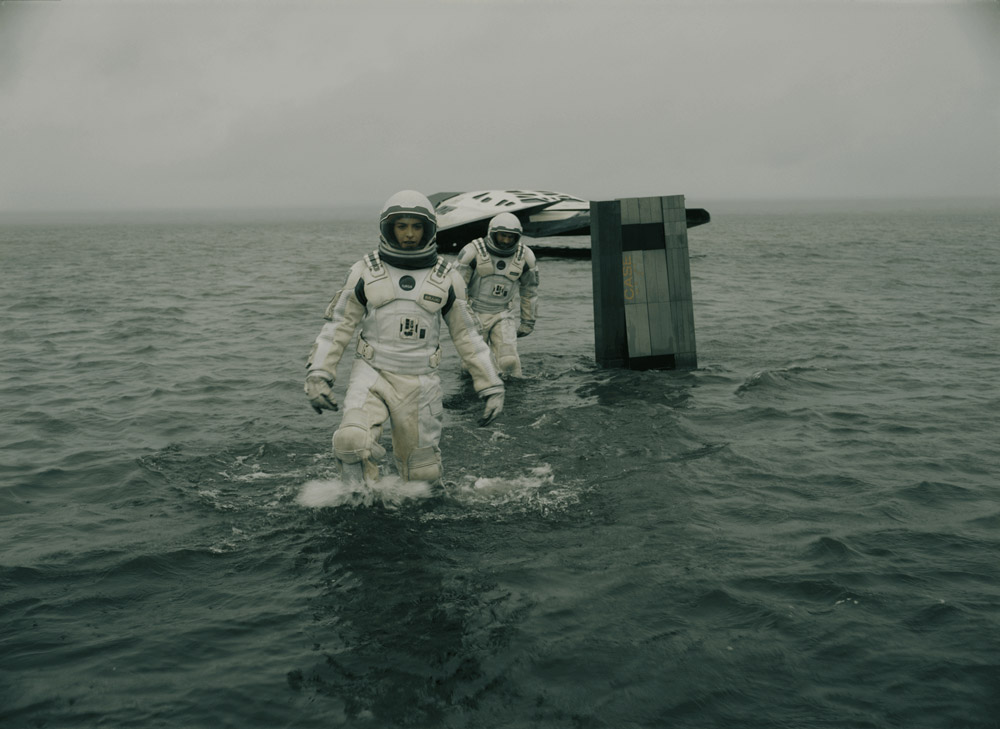
(c) 2014 Warner Bros. Entertainment, Inc. and Paramount Pictures. All Rights Reserved.
The advanced physics that gave birth to “Interstellar” and Nolan’s thorough realism
2018.10.26
Utilization of miniatures and full-scale sets
Nolan decided to depict objects such as the ring-shaped spacecraft Endurance and the space shuttle Ranger using traditional miniature photography. The company that received Nolan's request was New Deal Studios , which also worked on the Batmobile for The Dark Knight (2008). The company produced a 1/15 scale model for motion control photography and a 1/5 scale model for explosion scenes.
A 7/8 scale model of "Ranger", which is almost life-size, was also created and photographed with actors on location in Iceland. After filming on location, it was taken to Sony Pictures Studios in Los Angeles, where it was mounted on a hydraulic motion base similar to a Flight simulator, and exterior scenes were filmed. This motion base can be manually operated in real time, and Nolan moves it himself.

"Interstellar" (c) 2014 Warner Bros. Entertainment, Inc. and Paramount Pictures. All Rights Reserved.
For the background of the spaceship, Nolan did not want a matte composition, so the starry sky and black hole were projected onto the screen using front projection. This method is also used to depict the scenery seen from the cockpit window inside the ship. The method of depicting the scenery outside the window using front or rear projection was widely used until the 1980s, but it wasn't until high-precision digital matte composition using bluebacks and greenbacks became popular. had completely disappeared.
However, since director Joseph Kosinski revived it in Oblivion (13), it has been used in various works. The reason for this is the widespread use of high-brightness, high-resolution digital projectors, and the ability to freely choose materials for sets and costumes. In the case of blue (green) background composition, there were problems in that holes would be created in areas of the same color as the background, and shiny materials could not be used because they would pick up the background color. However, projection has the great advantage of allowing freedom in materials and colors, and also making it easier for directors and actors to visualize the finished screen, which was the main reason for choosing this project.
Additionally, a life-sized puppet was created for TARS, a simple box-shaped robot that looked very much like CG, and Bill Irwin, who has experience in pantomime, operated it from behind. The most difficult scene was the scene in which TARS carries Dr. Amelia (Anne Hathaway) and moves at high speed across the water surface of Dr. Miller's Planet, which is covered in ocean.

"Interstellar" (c) 2014 Warner Bros. Entertainment, Inc. and Paramount Pictures. All Rights Reserved.
First, in a lagoon in Iceland, where the film was filmed, we rode a four-wheeled bike equipped with a TARS mechanism that rotates like a windmill. Next, at the same location, we filmed a stuntman running while holding Hathaway, and TARS carrying a substitute. The necessary footage from both was then rotoscoped (manually cut out/masked) and Hathaway's position and posture were digitally corrected. Furthermore, the water surface and splashes were added using CG to complete the project.
In this way, Nolan does not completely hate CG, but uses it when necessary. However, this is just one way to sublimate the live-action footage into a more realistic expression. Nolan's thoroughness in prioritizing live action can be seen here as well.
Text: Takayuki Oguchi
In 1982, he became the director of Japan's first CG production, JCGL. After working as the head designer for the IMAX Dome 3D video "Universe 2 ~Sound of the Sun~" at the Fujitsu Pavilion at EXPO'90, he became a freelance video creator. Won an Emmy Award for the NHK special ``Life: A 4 Billion Year Distant Journey'' (1994). His most recent work is the supervision of NHK E-Tele's ``Kongura CG Classroom'' (18). He is also a video journalist specializing in VFX, CG, 3D movies, art animation, exhibition videos, etc., and has contributed numerous articles to film magazines, theater pamphlets, the web, etc. In addition to being a visiting professor at Digital Hollywood University, he is also a part-time lecturer at Tokyo University of the Arts Graduate School of Animation, Nihon Gei Film Department, and Japan Electronics College.

"Interstellar"
Blu-ray ¥2,381 + tax DVD ¥1,429 + tax
warner bros home entertainment
(c) 2014 Warner Bros. Entertainment, Inc. and Paramount Pictures. All Rights Reserved.

